The Ultra Spirit Moved Me
The special beauty, challenge, and people of the Antelope Canyon Ultra
I’m looking forward to connecting with paid subscribers for a chat during an online meetup tomorrow (March 16). If you’d like to join this community’s monthly Zoom and receive bonus posts, please consider upgrading your free subscription to paid.
What keeps you running ultras? Doesn’t your body break down? Don’t you get bored?
People ask questions like that pretty frequently, since I’ve run some 100 ultras in two decades. Last Saturday’s event, the Antelope Canyon 50-miler on the Navajo Nation around Page, Arizona, gave some answers.
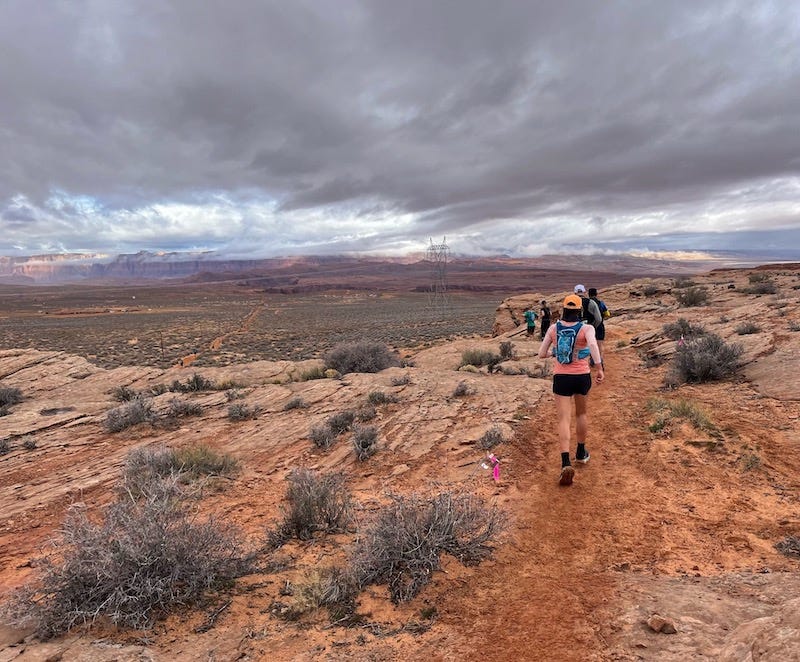
I almost didn’t run it because I felt rather broken down and low on energy following the Black Canyon 60K (37 miles) three weeks ago. But I decided to go because it presented a rare and special opportunity to run and hike around land normally off limits unless accompanied by Diné (the word for Navajo people) guides. The route features three slot canyons and a spectacular overview of Horseshoe Bend that runners see while traversing slickrock on the rim of the cliffs that drop down to the Colorado River.
But mostly, I was eager for a different kind of race—one that felt more like a day-tripping odyssey. The recent Black Canyon ultra was much more competitive and runnable, which created stress to run and push hard the entire route. By contrast, the Antelope Canyon ultra features a great deal of hiking and slow running through deep sand and over slickrock. Since I knew ahead of time that it would be slow going, I felt fine about lingering to take in the views. Moreover, it would give me a perfect training run to prep for a 45ish-mile Grand Canyon rim-to-rim-to-rim excursion I have planned for mid-May (more on that later).
I drove myself to Page on Friday morning (my husband stayed home to care for our animals), and I barely made it over the Lizard Head mountain pass south of Telluride before a blizzard closed the highway. Once past Cortez, driving through the Four Corners area, my mind flashed back on experiences I’ve had in this part of the region over the decades.
As a girl in the 1970s and teen in the ’80s, I traveled this route across Arizona with my family, back and forth every summer, on our way to live for three months in Telluride. I normally squeezed into the back seat of Mom’s Datsun, or later, her Chevy Chevette (nicknamed “Shit Chev”), windows down since we didn’t have air conditioning, and we communicated with Dad in his truck through a crackling CB radio. My parents began a tradition of spending summers in Telluride in the 1960s because Dad always worked at schools with summers off, and his family roots are here. Back then—before the ski resort and festivals transformed Telluride—a couple with five kids and a slightly-above-median income could afford to buy five acres and build a modest cabin, as far-fetched as that sounds now.
Through these annual road trips, I became familiar with massive red-rock formations along the highway with names based on their shapes, like Elephant Feet and Baby Rocks, and towns like Kayenta and Tuba City. But the poverty of the Navajo reservation—in particular, the falling-apart shacks that housed native trinket stands on the side of the road, where we sometimes stopped to look at turquoise jewelry, and the stray dogs begging for food at gas stations—always filled me with curiosity, sadness, confusion, and some intuitive guilt. As a kid, I barely understood the history and culture of the rez, and on some level, I always felt like an interloper. Those feelings linger, and gaps in my knowledge persist.
More recently, starting in 2012, I developed a deeper connection and love for the land of northern Arizona and southern Utah thanks to the Grand to Grand Ultra 170-mile weeklong self-supported stage race, an off-the-grid and extremely challenging ultra that I ran in 2012, ’14, and ’19. Running on remote BLM and Forest Service land and camping overnight—unable to shower, wearing the same running clothes every day, subsisting only on the food I could carry in my pack—made me feel almost baked into the land as I became immersed in the landscape. That route goes from the north rim of the Grand Canyon, through Kanab, to part of the Grand Staircase overlooking Bryce National Park.
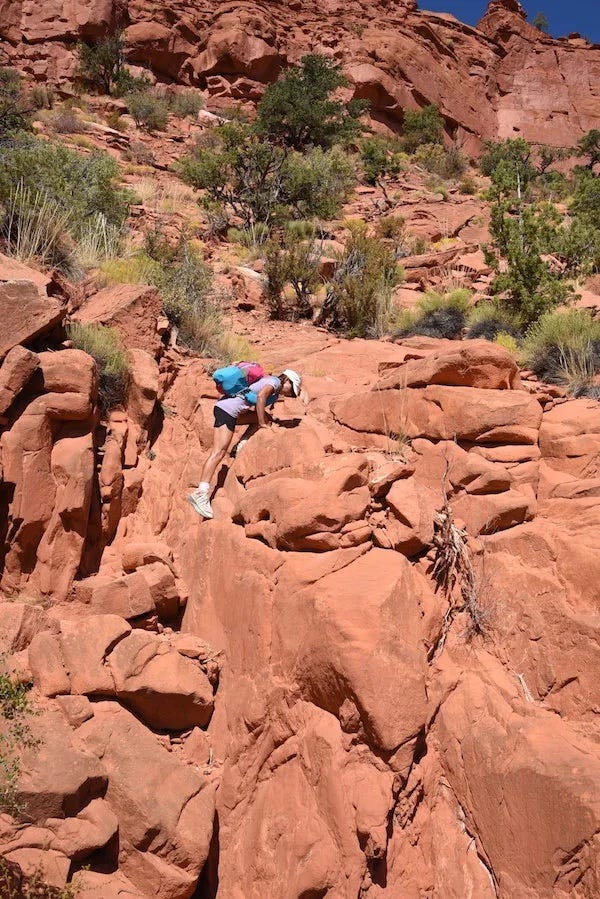
My desire to reconnect with the part of me that thrived at the Grand to Grand Ultra is largely what compelled me to sign up for the Antelope Canyon 50. I couldn’t wait to run through red sand and navigate a slot canyon again. But also, I wanted to have a more authentic experience around Page, a town next to the Arizona-Utah border by Lake Powell, which I only visited once—under very strange circumstances.
My husband, daughter, and I went to Page, near Antelope Canyon, in February 2020 during her spring break from college, when the “novel coronavirus” was just starting to crop up in the U.S. We had a two-night stay at the Amangiri lodge just north of Page. I had never heard of Amangiri until I won (!) a free stay there as the grand prize for winning the 2019 Grand to Grand Ultra. I’ve never won anything significant, except this, and the stay was worth several thousands of dollars. I was like, “pinch me.”
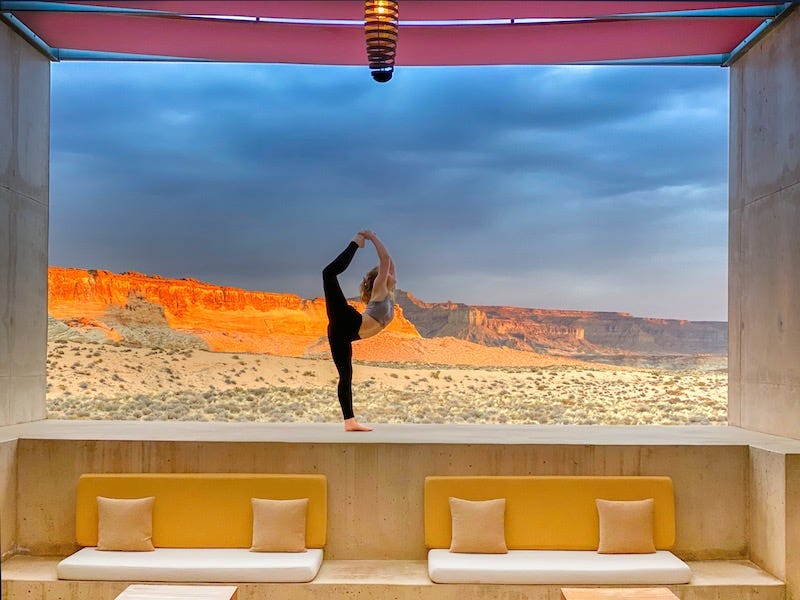
If you’ve never heard of Amangiri, that’s not surprising. It’s exclusive by design. It’s part of the Aman Resorts chain for the 1 percent of the 1 percent, and it makes the Four Seasons seem like a Holiday Inn. I never would have stayed there, or even heard about it, unless we got comp’ed. We were treated to a luxury casita with our own outdoor lounge overlooking the open desert, and a climb on their private Via Ferrata. It was amazing, but also kind of disgusting. They had more servers than guests, and everyone slunk around in robes, speaking in hushed tones and avoiding eye contact. They practiced social distancing before it became a thing one month later when the pandemic hit. Everything about it felt weird, fortress-like, and colonizing, even though elements of the design aimed to pay homage to native culture. I was ready to leave after Day 2.
But when we left Amangiri, we stopped in Page to visit Horseshoe Bend and had the polar opposite tourist experience—a parking lot filled with tour busses and a concrete path clogged with visitors. We all took a short walk to an overlook where everyone seemed to spend more time posing for selfies with their backs turned to Horseshoe Bend, rather than really appreciating the view of the cliffs and river.
I just wanted to visit and explore the incredible landscape in a less-touristy way. Three years later, I got the chance with the Antelope Canyon 50.
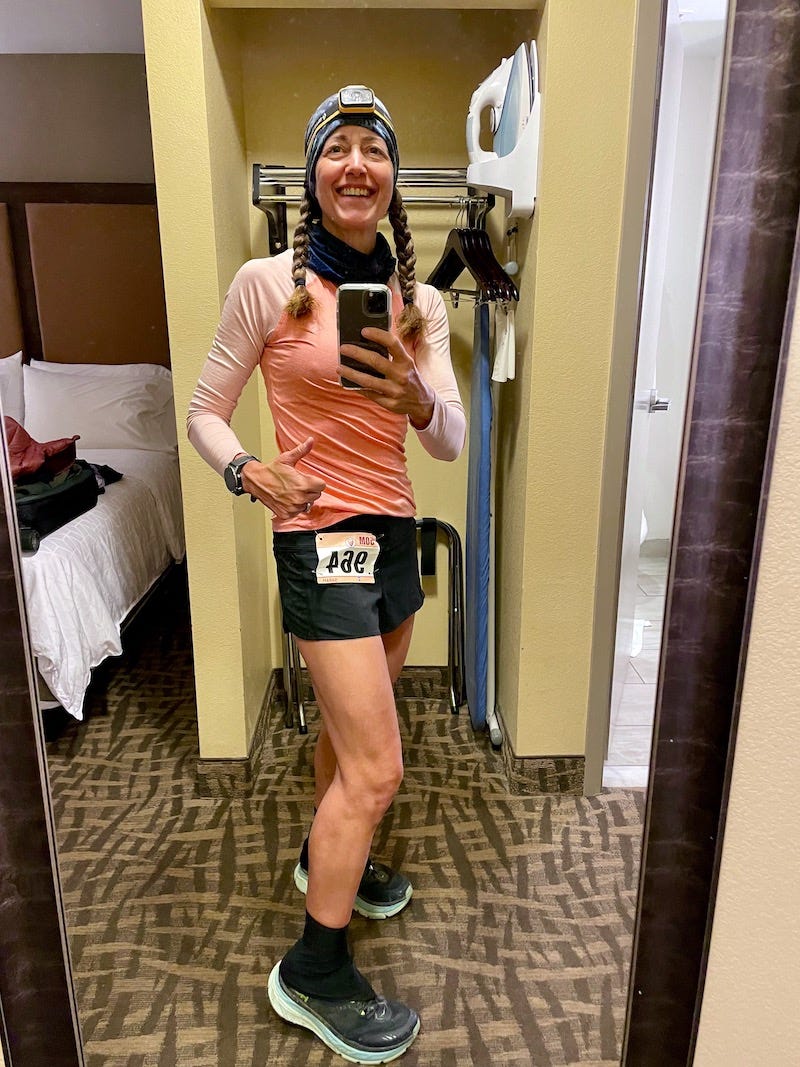
At the race expo the day prior, I was impressed by the representation of people of color in the crowd (not the case at most Colorado mountain races). LatinosRun’s Phoenix chapter had a booth and numerous runners participating, and Diné runners and volunteers filled the crowd. The group Native Women Running fielded a team of runners and led the gathering in a land acknowledgement.
The event had different divisions (half marathon, 55K, 50M, 100M), and the shorter distances made it beginner-friendly. The whole vibe felt more supportive and less competitive than my last ultra, and that was the vibe I was seeking.
I made it to the start line about a half hour before the 5:45 a.m. start. As luck or fate would have it, out of the hundreds of cars in the parking lot, I parked right next to a vehicle with two women I quickly recognized—Pam Smith and Traci Falbo. No way! Both are ultrarunning stars. Pam is the 2013 Western States 100 winner and a USATF 100K national champ. I’ve known her over the years and sold her my old camper van. Traci set a 48-hour world record with 242 miles and is a USATF 100M national champ. I was thrilled to connect with longtime ultra women who are close in age to me (they’re 48 and 51).
Like me, they were seeking to have fun and view the scenery, not really race. Pam said she had been hating running and thus embarked on a road trip with Traci to fall in love with it again. They had run the Monument Valley 50 ultra the weekend prior and were spending the week running around the desert.
Seeing them sparked a theme of the day: camaraderie.
I settled into a comfortable, manageable pace and struck up conversations with those around me. As the sun rose, I felt peaceful, even earthy. I felt a sense of belonging and gratitude. It all felt so good! And my body was cooperating, not protesting.
Around Mile 9, we entered the first slot canyon—Upper Antelope. It’s so narrow, I had to walk and be careful not to bonk my head or shoulders on the protruding bulges of sandstone. I kept looking up to see the light filtering through and dancing on the shapes. Photos don’t capture the special feeling in there, like visiting an earthen cathedral or being inside a giant sculpture.
We popped out of the canyon, ran a sandy track and scrambled up a bluff, then entered the next slot canyon known as Lower Antelope, also dazzling.
Some 15 or so miles into the route, we hit an unpleasant section under giant power lines, and the power grid buzzed audibly and ominously with static, perhaps due to the moisture building in the air. Seeking company and conversation, I ran harder to catch up to a woman ahead who had a Mexican flag pinned to her pack. I could hear her speaking Spanish with another Mexican-American runner, and I enjoyed hearing and understanding their conversation. I hoped to practice some of my Spanish with them.
When he asked her where she’s from in Mexico, she explained her mother is first-generation from there, and then she dropped a line in English, “but I live in Oakland.” Wait, what? I butted into the conversation by asking what part of Oakland and what’s her name. When she answered Rockridge and Christina, I said, “I know you!” (I lived in the East Bay Area for 20 years and developed many runner friends there.)
Small world! Christina Vincent and I have been connected on social media for a long time, we shared the trail while pacing at Cocodona, and we have numerous mutual friends. I was so happy to connect with her and talk about Oakland and running.
From then on, we ran together. Not exactly side by side—one of us would naturally pull ahead, then we’d rejoin at an aid station and continue leapfrogging—but this connection, which she called “slingshotting,” made us feel connected and helped propel us forward.
We both paused at the Mile 20 aid station next to Horseshoe Bend to change into lighter layers from our drop bags. I thought it would get sunny and warm. Wrong.
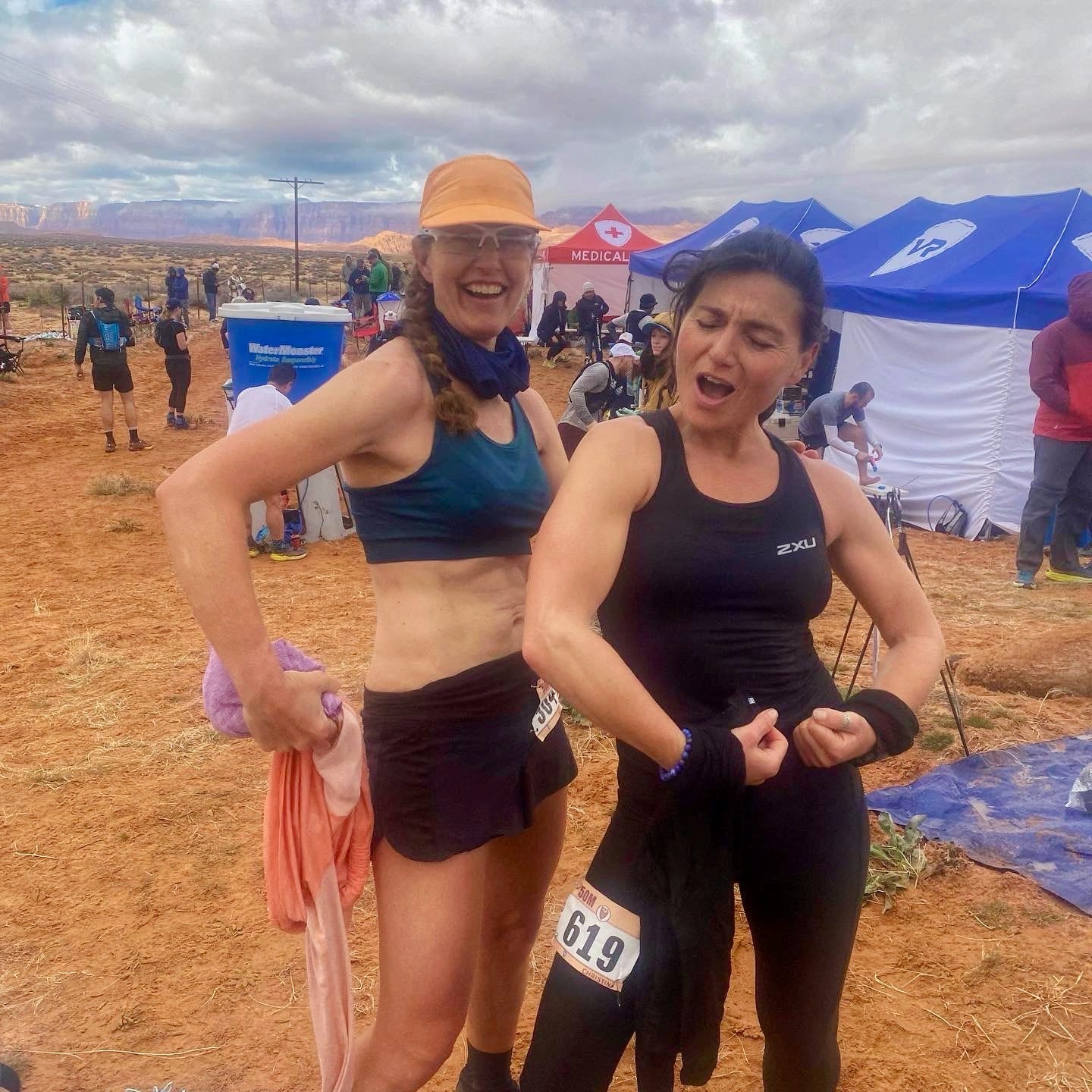
The next seven miles were among the toughest, but most scenic. Layered, undulating slickrock above the river’s cliffs proved tricky to navigate without turning an ankle. I tried to relax, go with the flow, and soak in the views.

Soon we got a chance to rest—for a very long time! At Mile 27, we entered the third slot canyon, called Waterholes. In previous years, runners had to scramble down boulders to enter the canyon. This year, a reroute caused the organizers to install a giant ladder, a couple of stories high, into the canyon. The problem was, the ladder took time to descend individually, and it was bouncy, so some participants froze with fear. A bottleneck with a backup formed.
When we got there, a few dozen runners waited ahead of us. I could see Pam and Traci a little ways up. I felt uncharacteristically patient and didn’t mind hanging out, since it forced us all to rest and gave us a chance to chat. We waited for 36 minutes. The main downside was, I caught a chill and my muscles stiffened. Donning my windbreaker helped a bit, but I would find myself fighting the chills for the whole cold second half of the race.
Once we got down the ladder, the canyon proved even more magnificent than the first two. We had to climb several ladders inside the canyon as well.
“Expect the unexpected” is one of my adages for ultras (and for childbirth). Nobody, myself included, prepared for the unexpected weather. The forecast had called for a chance of light showers and mild temperatures, but after Mile 30, Mother Nature had a different plan. Rain became heavy and for a while turned to hail. Temps dropped, wind slammed. All I had was the thin windbreaker, so I knew to keep moving as best as possible to generate body heat. Christina and I continued to slingshot and stay cheerful.
Approaching the town of Page to head out on the third and final big segment—a 10-mile loop on the Page Rim Trail overlooking Lake Powell—I saw the faster runners in the 55K heading in the opposite direction toward the finish. An Asian woman smiled, waved, and then held out her hand to high-five. I did a double-take, disbelieving. It was the woman nicknamed Rafi, from Taiwan and studying in New York, I met on the shuttle bus at the Black Canyon ultra three weeks ago. Again I thought, small world!
I looked forward to the final 10 miles because they reputedly were hard-packed, flat, and runnable. I was ready to run faster to warm up. But, not today. The intense downpour transformed the Page Rim Trail into gooey, thick, slippery mud. It was more difficult to run in than the deep sand. We all settled into a grim trudge. I consoled myself with knowing I’d be done after this loop, whereas the unlucky 100-milers had to do this loop six times total through the night. (Two-thirds of the 100-mile runners dropped.) I didn’t take any photos from this portion because I didn’t want my camera to get soaked.
I was cold, stiff, tired. But far from miserable. Challenging portions like this make the ultra finish all the more worthwhile. I tucked in behind Christina and stuck with her the final three miles, pretending she was my pacer. All I had to do was put my brain on hold and mimic her footsteps.
As slow as we were going, we were still toward the front of the pack. I couldn’t believe how many runners we passed who were going in the opposite direction to start the muddy 10-mile loop after we had finished it. All of them looked determined. They would take hours longer to finish, after dark, and their ultra experience would feel exponentially harder because of the added time on the course. Seeing them helped me feel stronger and more grateful in the adverse conditions.
Of course, we got it done. There was never any doubt. It just took patience and positivity. We finished in 12 hours, 6 minutes—not bad considering the long wait at the ladder. We were 73rd and 74th out of 280 finishers and 100+ DNFs in the 50-mile division.
At the finish line, my new Taiwanese friend was there to congratulate me, too! I was so touched by her presence.

Going back to those questions at the start, what keeps me running ultras? The scenery, the camaraderie, the challenge, the highs and lows, all the finish-line feels—the spirit of it all. Doesn’t your body break down? No, amazingly. It felt better on this 50M than it did three weeks ago at the 60K. Don’t you get bored? Not during dramatic ultras like this! I never even pulled out my Airpods for music this time. I just settled into the pace and the landscape, reveling in being a desert runner again.
A postscript
At the finish, runners got a meal ticket for a free entree from a food truck. I used it to order a small pizza, then hurried to my car to blast the heat while the pizza cooked. I started shaking, cramping, and spasming as the cold and fatigue took hold. I literally could not get out of the car until I warmed up—my muscles would not cooperate—so I drove my car over to the food truck.
An older white man with several Navajo volunteers stood there. I recognized him from the Navajo Race Series booth from the expo the day prior, and I had thought with curiosity, who’s the white dude collaborating with all the Diné?
I put down the passenger-side window and pathetically asked him for help—would he mind getting my pizza for me since I couldn’t get out of the car? He laughed and said of course, and he kindly brought over my order. I chatted for a bit with him and the other men. He told me, “Come run one of our races!”
Later, I pulled out the flyer I got from him at the expo. The nonprofit organization is NavajoYes, and it puts on a series of trail races and promotes an active, healthy lifestyle on the Navajo Nation. The man is Tom Riggenbach, a runner and teacher who has spent the past three decades teaching and working with Diné youth, as told in this excellent Trail Runner feature story. I wish I had known his story when I awkwardly asked for help with my pizza. I’m inspired by him and all the others I met this past weekend, and I’d like to return to run one of the races in the Navajo Parks series (the Shiprock Marathon is coming up next on May 5).

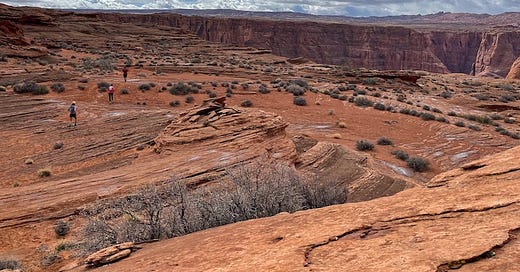

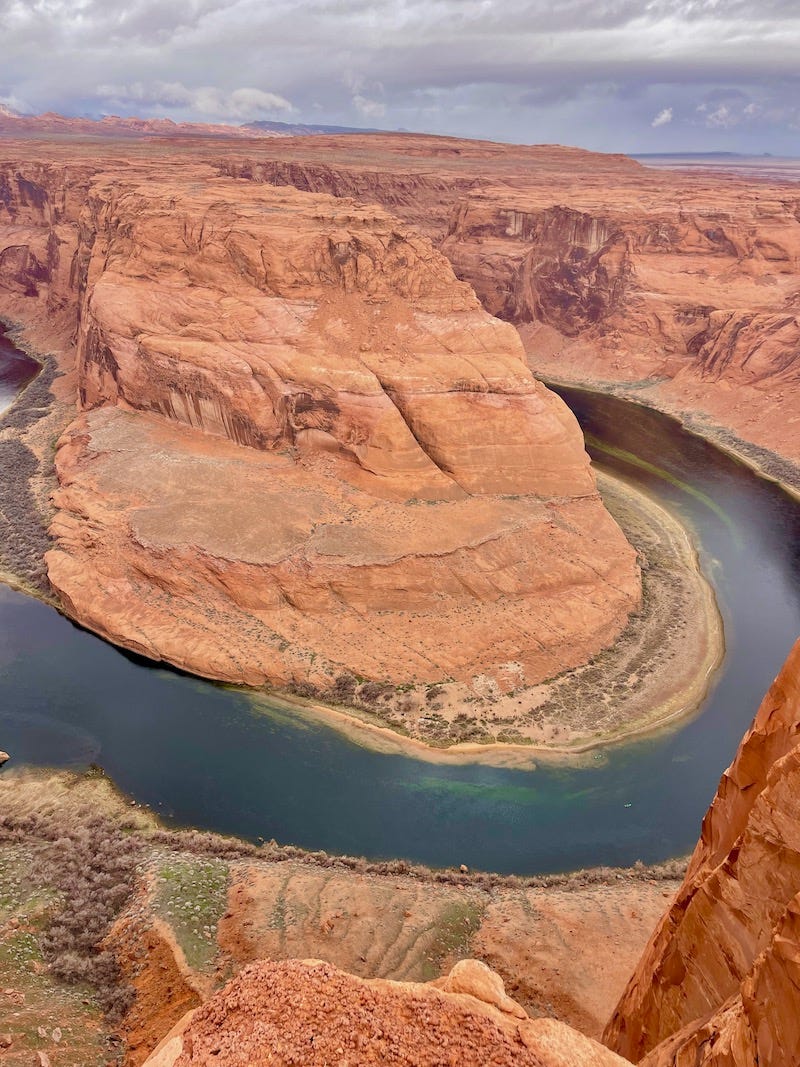

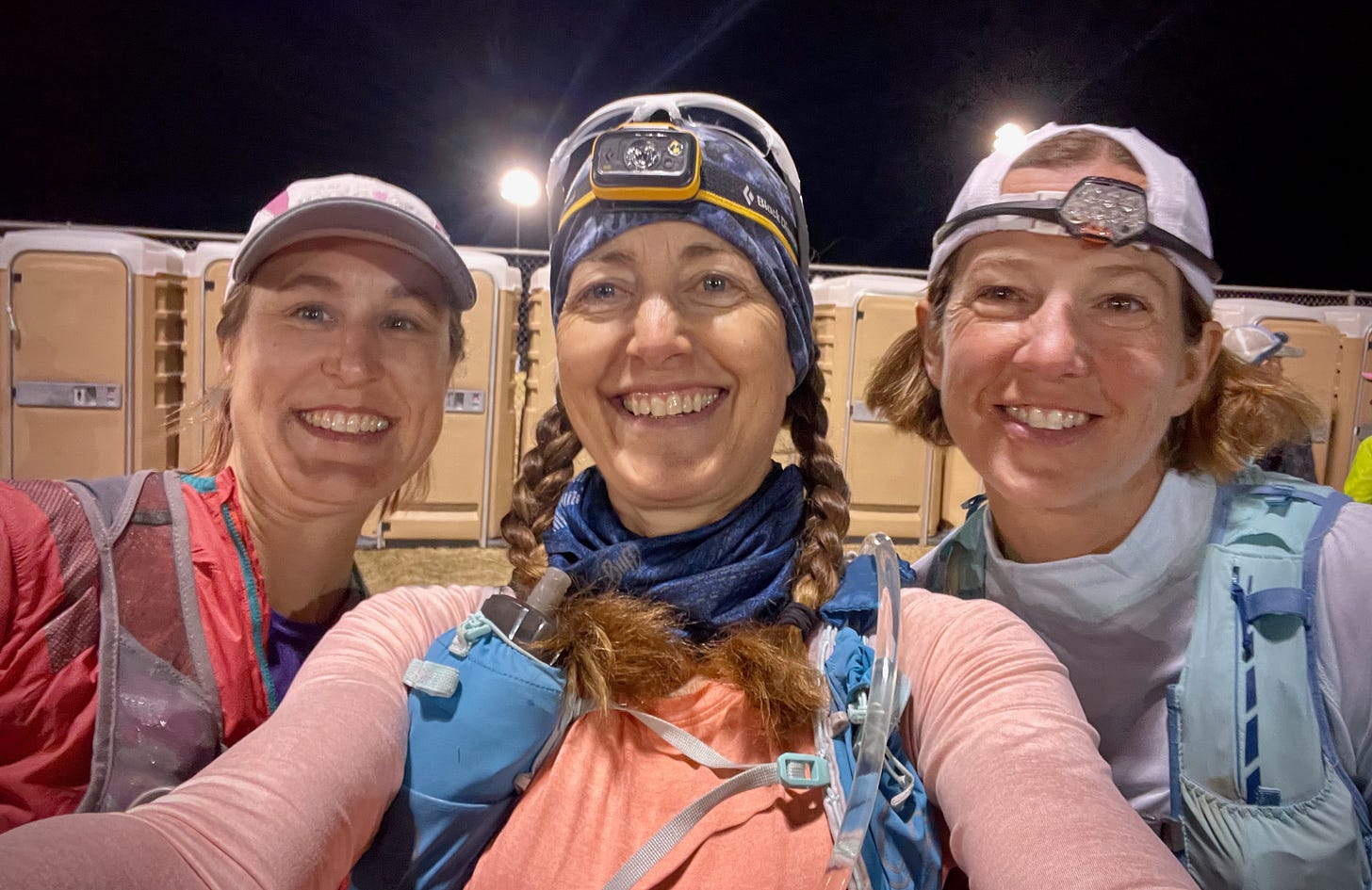
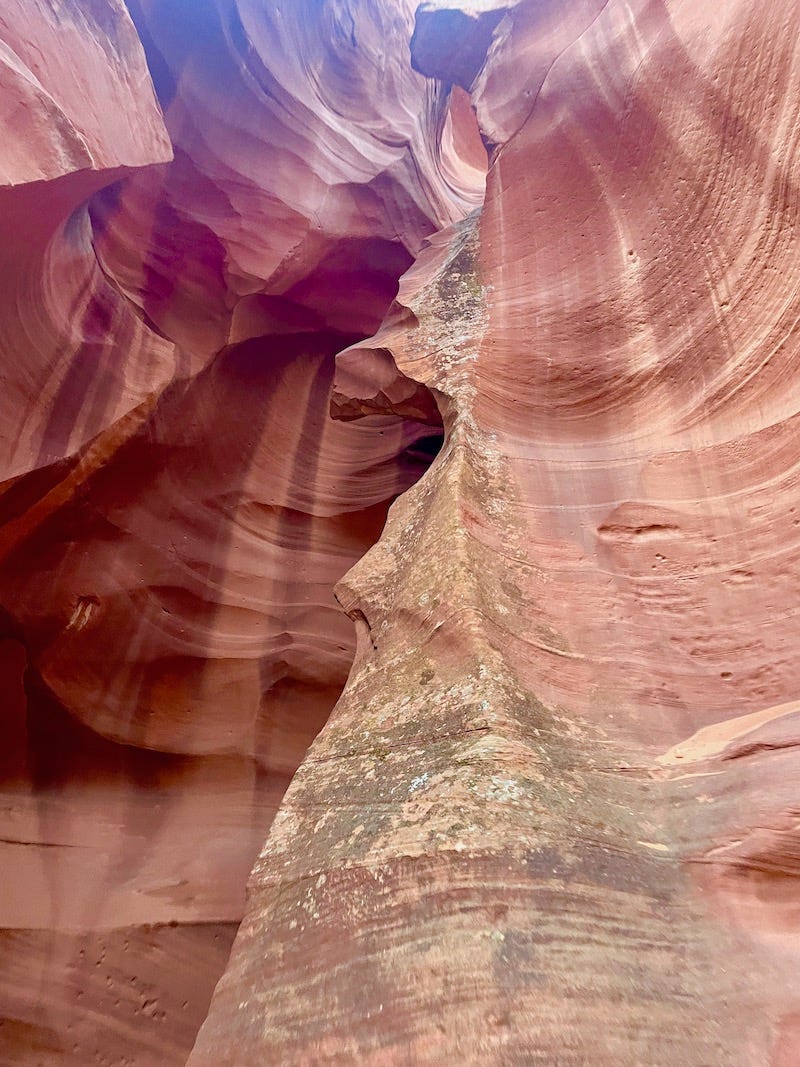
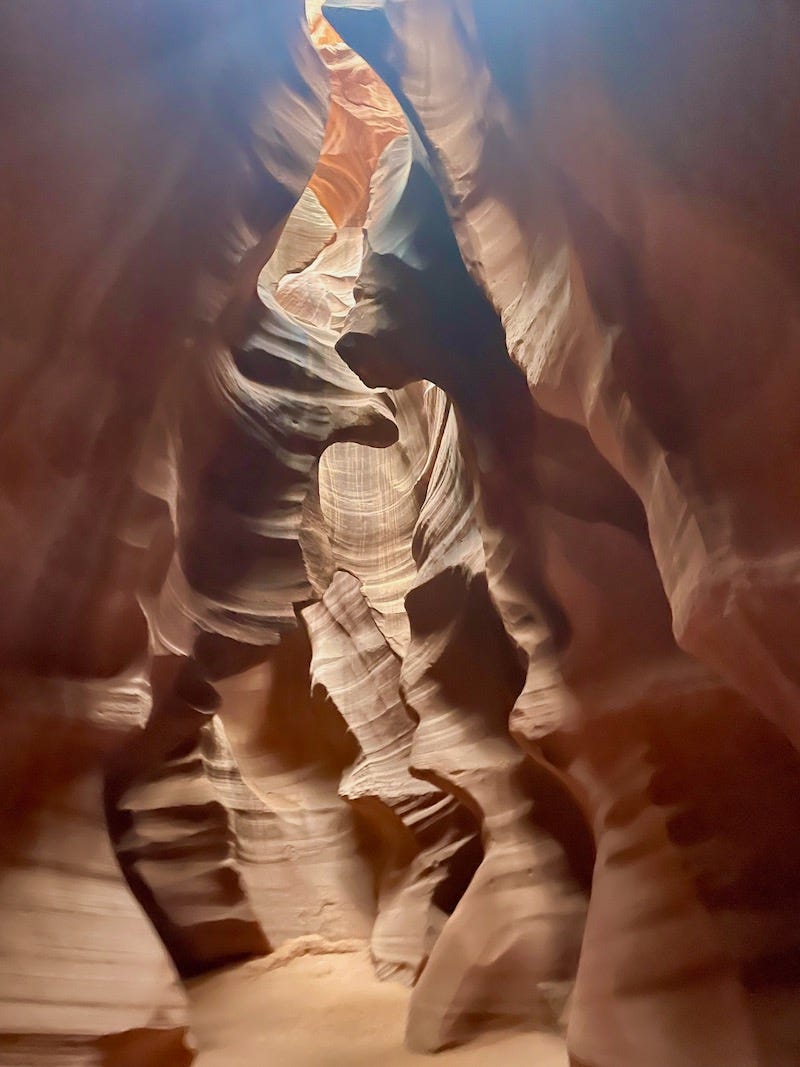
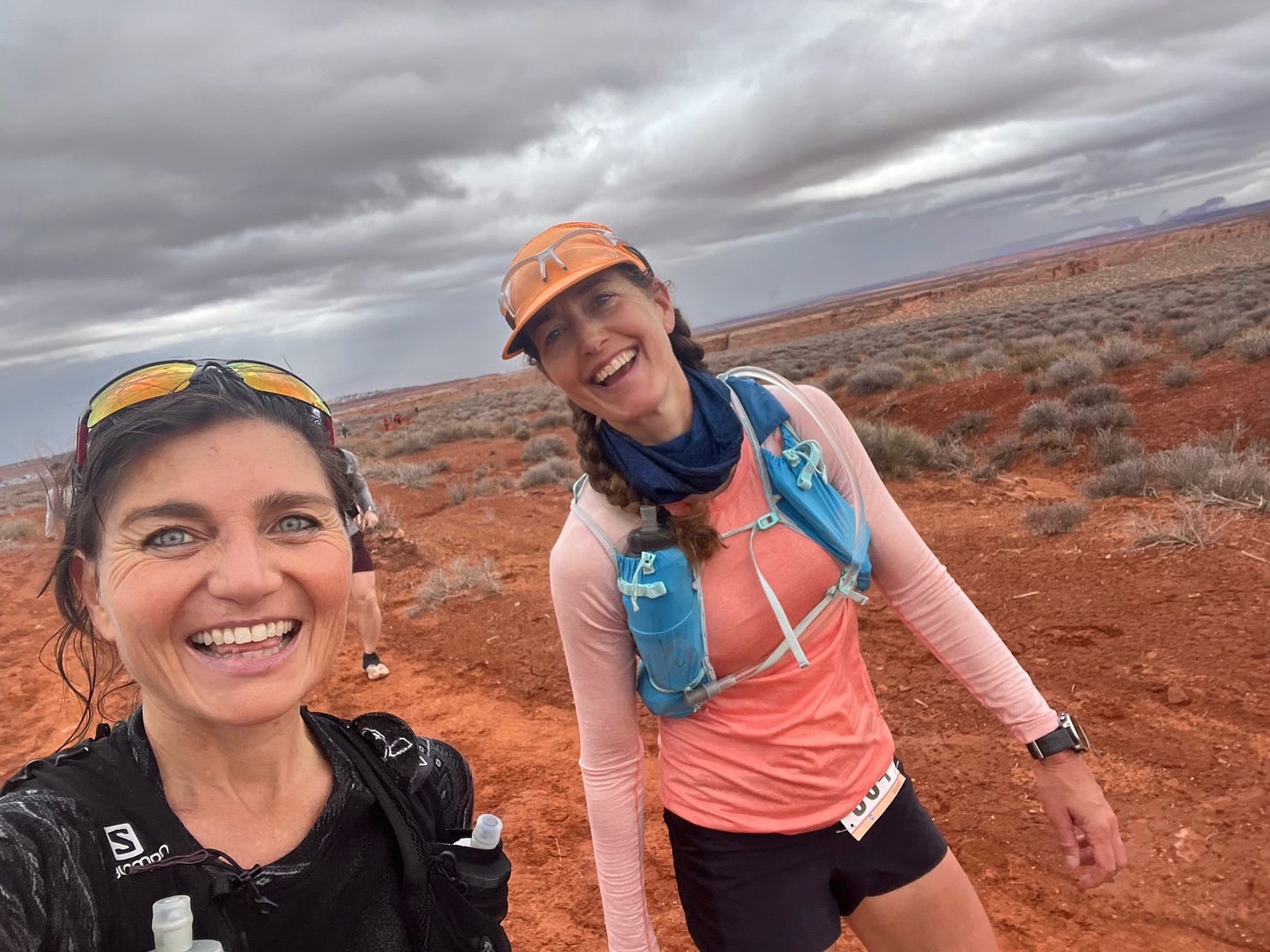
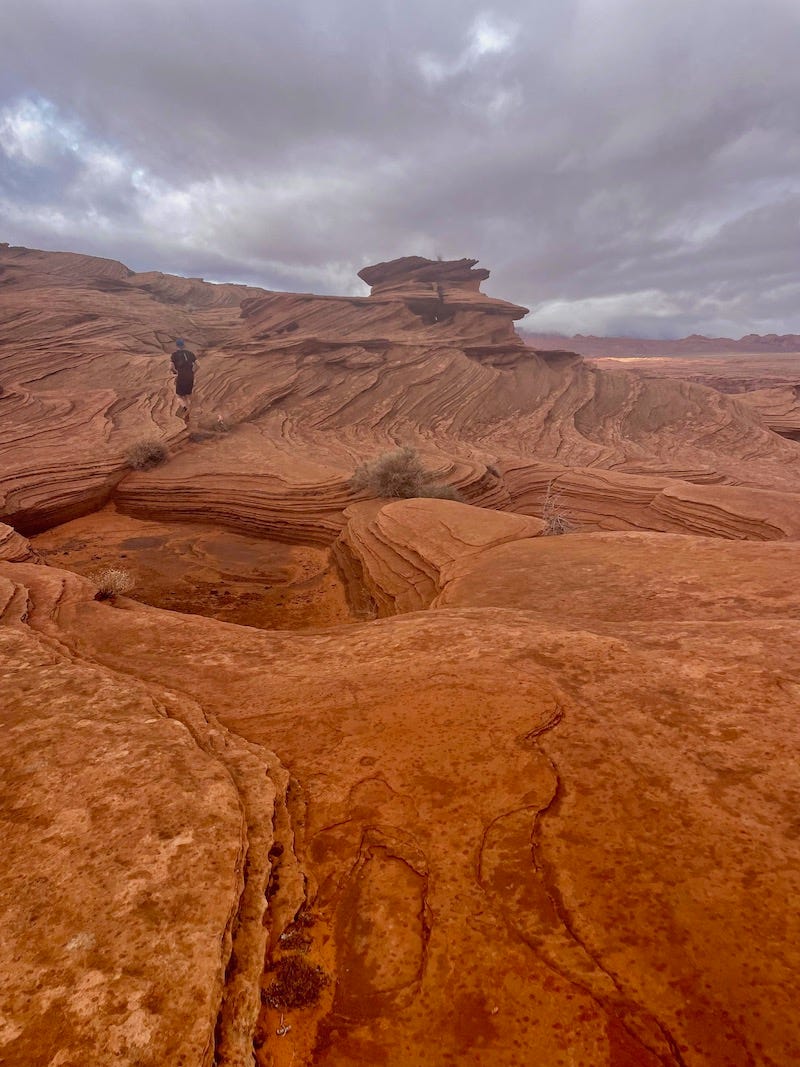
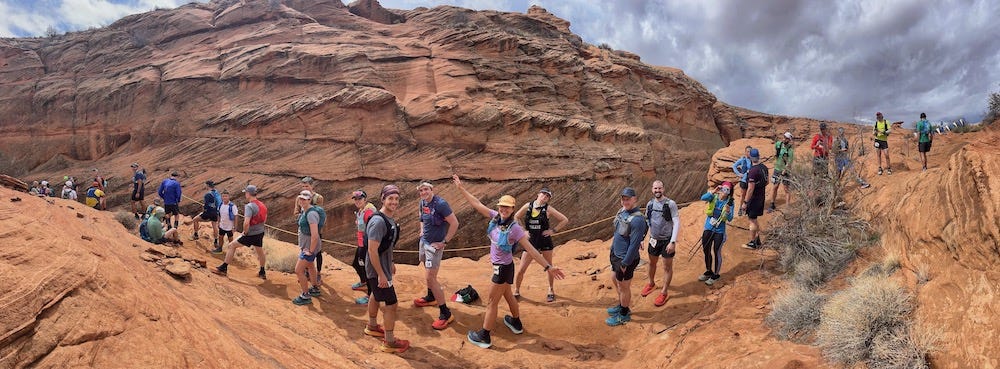
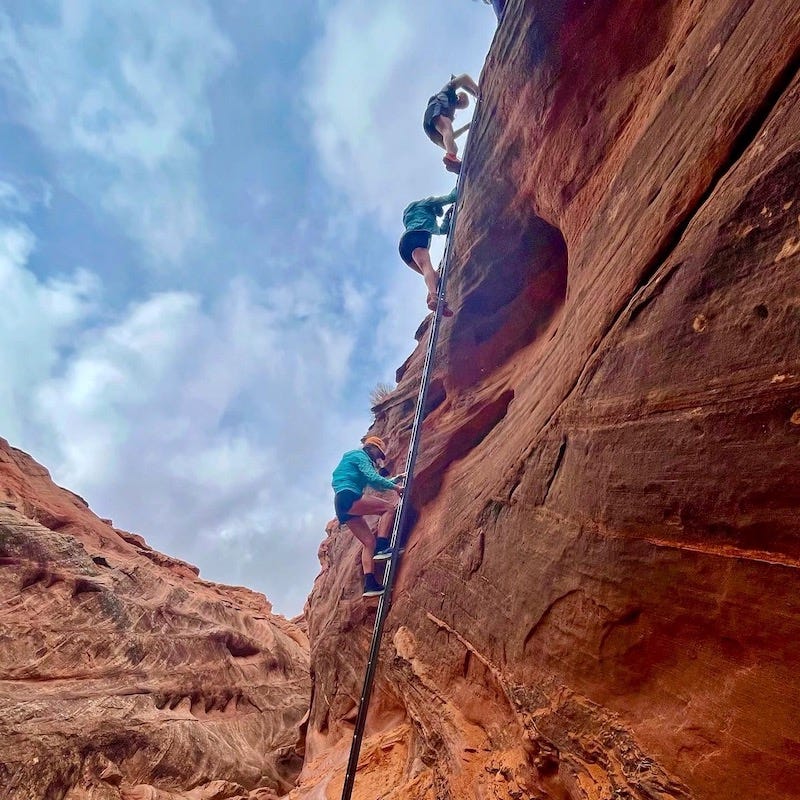
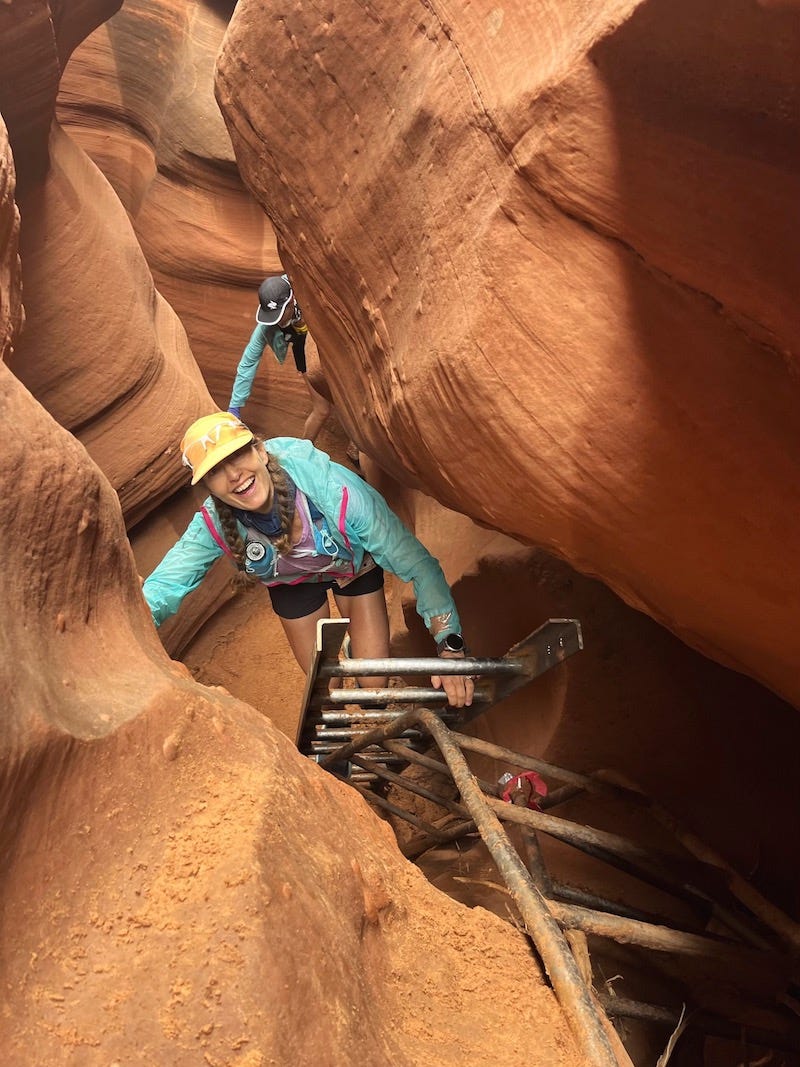
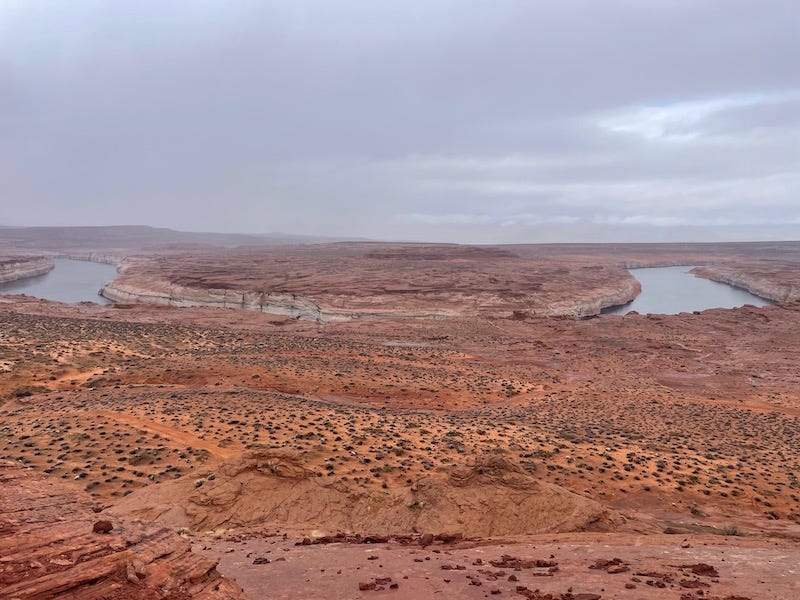
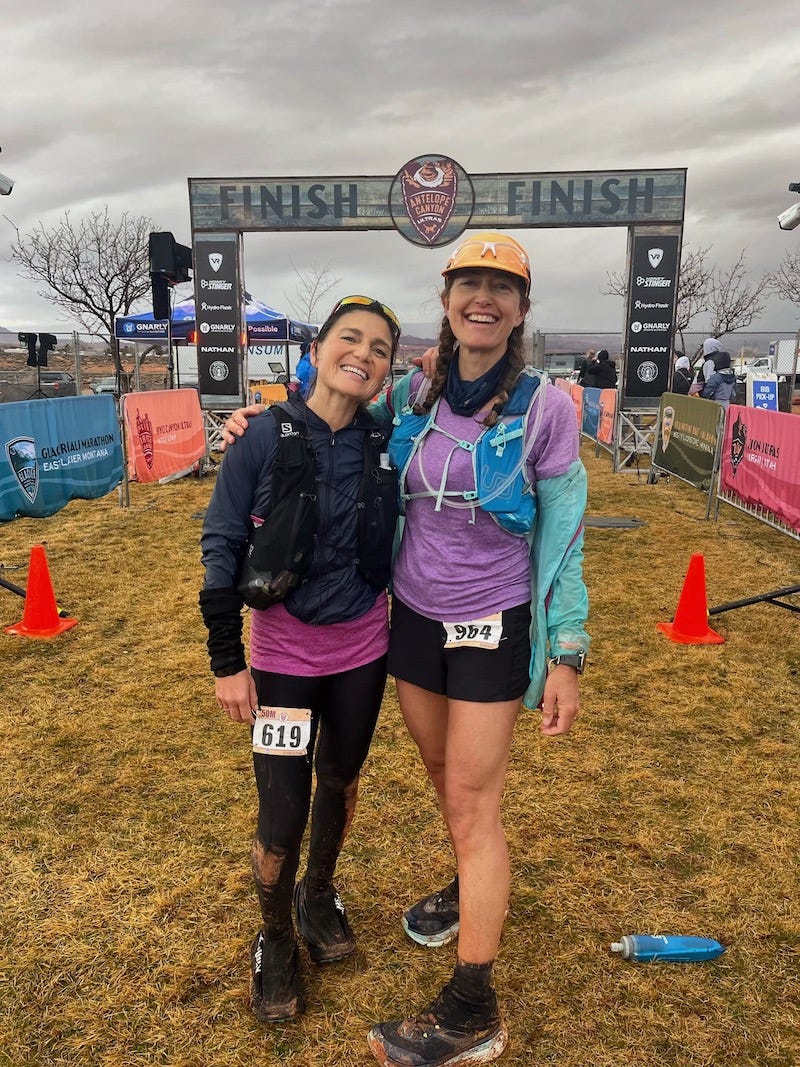
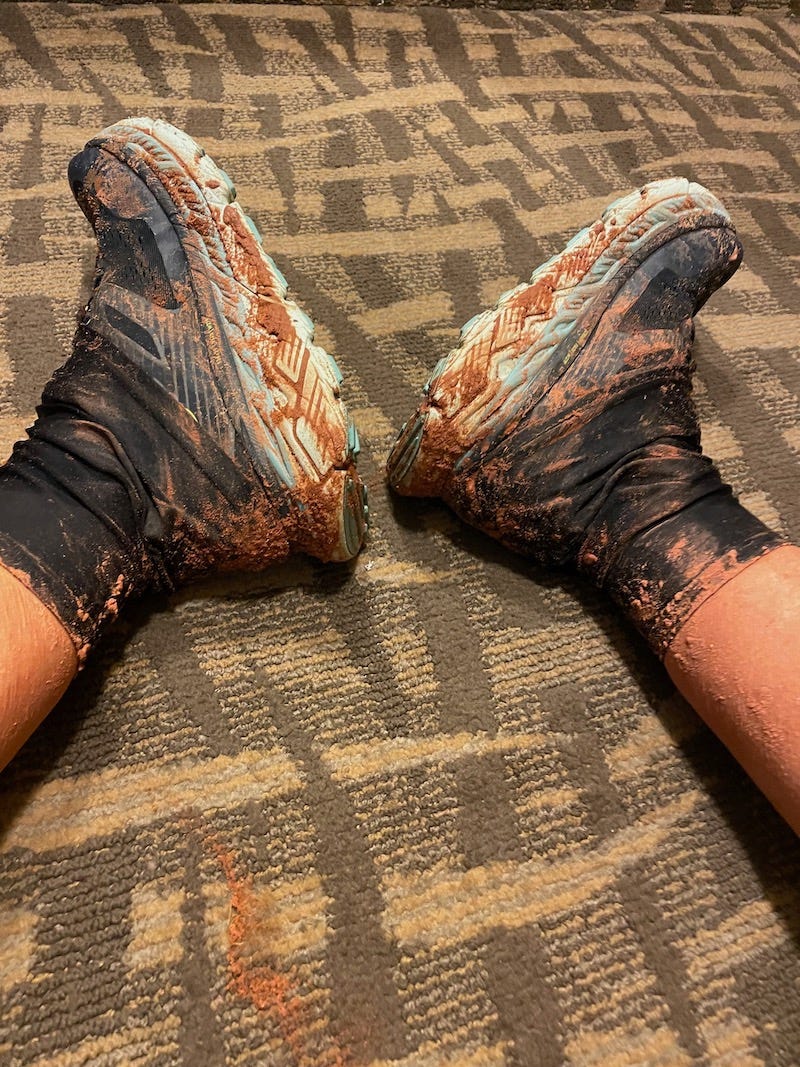
Great job! Sounds like this one really charged your batteries up. Can't wait to hear what's next for you!
Loved to read this! Very well written.